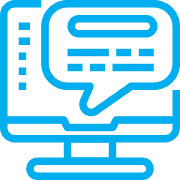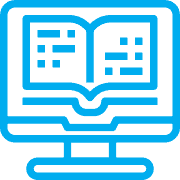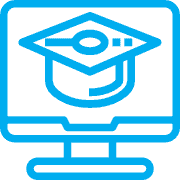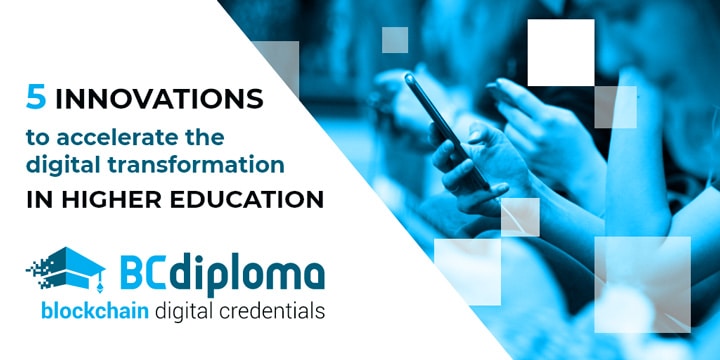For the last ten years or so, digital technology has been at the heart of the strategy implemented by universities around the world. This strategy has two objectives: to increase the attractiveness of universities and to promote student success.
The digital revolution offers new opportunities every day to innovate and transform higher education. In a world of constant and fast-paced change, higher education institutions are competing to innovate: they are constantly rethinking their educational methods, renovating their infrastructures and finding new ideas to offer better quality training to their students. The objective is often to expand nationally and internationally.
A brief overview of important digital innovations in higher education in recent years.

1. MOOCs: an innovation democratizing access to higher education
MOOCs (Massive Online Open Classes) are online courses, open to all, offered by institutions of higher education around the world. These are free training that allows any student to participate without any conditions. A certification system is offered for some courses in return for a financial contribution. The course topics are often diverse, from mathematics to social sciences, personal development and health.
Based in the United States, Coursera is one of the largest international platforms offering MOOCs. In France, we find the FUN (France Université Numérique) platform set up by the Ministry of National Education, Higher Education and Research.
In recent years, the best universities in the world have started to offer MOOCs: you can find courses from the prestigious American universities Yale and Stanford, for example. French universities are also taking up the challenge: Ecole Polytechnique, for example, offers a MOOC on Creating and Developing a Technology Start-up, and ESSEC offers a course on Business and Climate Change… Innovative methods, innovative courses!
These courses, open to all, democratize access to knowledge. They are a godsend for students wishing to get knowledge on particular topics. For universities, it is an opportunity to gain more and more attractiveness and international influence with platforms that are often multilingual…

2. The digital educational resources engine: an innovation for accessibility to knowledge
It is a search engine launched by the Ministry of Higher Education and Research. It is intended for everyone: students, but also teachers, researchers, professionals and, more generally, the general public. It is a giant digital library that brings together about 30,000 educational resources that can be courses but also conferences and quizzes.
This search engine is based on the ORI OAI technology. It is a referencing and indexing tool that sets up a resource portal as well as a search engine for documents of a heterogeneous nature. It was developed in collaboration with the University of Valenciennes and Hainaut Cambrésis. This innovation brings together the knowledge of several French universities and research organizations.
For students, it represents an additional tool for their academic work and personal culture. This innovation also helps to better value the work of teachers and researchers by making their work both more accessible and more visible.

3. Self-assessment tests: an educational innovation designed for participative teaching
Gradually, the lectures are giving way to more participative and interactive courses. The trend is thus towards educational approaches that involve students more in order to make them more active rather than passive. For this, small tests are blooming and are regularly organized in some amphitheaters: some use electronic devices, others augmented reality as is the case, for example, for the Votar app. Developed in 2013 by Stéphane Poinsard, Votar allows teachers to organize mini-tests. Each time the teacher asks a question, the student raises a colored card. The teacher takes a picture of the class presenting the colored cards: immediately, he/she receives the number of correct answers.
This digital innovation allows the students to self-assess and the teacher to verify that the students are following and have understood the notions of the course.

4. Computer simulation: an innovation for learning in real-life situations in the medical and paramedical field
Computer simulation allows to virtually recreate clinical care cases. This educational tool is being developed in particular for future doctors, nurses, physiotherapists, etc. These computer simulations enable them to anticipate real-life cases they will encounter in their professional lives. These are real situations that train to react to serious or less serious pathologies without damaging the patient.
The CHU and the University of Angers are true pioneers in computer simulation: as early as 2008, they implemented this innovative tool in their training processes. In 2013, they will start using simulation for scenarios in intensive care and anesthesia. It is now also used in other fields, including oncology. It plays an integral part in teaching at the university level.

5. Dematerializing the credentials: the certification of diplomas using the blockchain
In university circles, the issue of fake diplomas is a real problem that is not without consequences for recruiters. When we talk about the blockchain, we often think of bitcoins, but the blockchain has many other uses. In particular, it makes it possible to certify diplomas in order to avoid any forgery of documents.
A blockchain is a database that contains all the transactions carried out since its creation. This database is secure and tamper-proof. In addition, anyone can freely check the validity of an item of information.
The company BCdiploma is specialized in digital open badge and micro credentials. More than 100 institutions in 15 different countries have trusted BCdiploma. Among them, prestigious schools such as emlyon business school or Arts et Métiers Paristech! BCdiploma is at the forefront of research and stands out through its international patent: access to certified data is just a click away. It also facilitates unlimited sharing of digital credentials on all media: Linkedin, PDF, QR code, mail… The blockchain has the advantage of making the diploma available in all situations. No more loss of diplomas and no more hours spent contacting institutions to receive a copy!
Finally, innovations in higher education involve students, teachers, the administration of institutions but also recruiters! The blockchain seems to have a bright future ahead of it. In addition to certifying diplomas, it could also make it possible to certify research work and ensure its traceability: this would make research results more visible and enable independence from publication in scientific journals or textbooks and reduce the associated costs.
The blockchain in education is still in its early stages but promises great opportunities for all stakeholders in higher education.
[title[Revolutionizing Higher Education: Key Digital Innovations and Trends]] [description[BCdiploma provides a concise overview of five key digital innovations in higher education recently.]]